Arizona
Miss Coaxial Cable
Cable TV was coming to Phoenix in 1952, and to celebrate a local TV store organized a "Miss Coaxial Cable" contest.
Arizona Republic - July 1, 1952

Arizona Republic - June 29, 1952
I can't find who was eventually crowned "Miss Coaxial Cable," but around the same time Mary Perkins was awarded the title of "Miss TV Cable," also in Phoenix. I'm guessing these must have been two rival beauty contests.

Arizona Republic - July 7, 1952
Posted By: Alex - Sun Dec 11, 2022 -
Comments (2)
Category: Awards, Prizes, Competitions and Contests, Television, 1950s, Arizona
Giganticus Headicus
I recently had the chance to visit this roadside oddity in Arizona. It's located about 20 miles east of Kingman on Route 66. Artist Gregg Arnold created it in 2004, modeling it after the giant heads on Easter Island. He created it, he said, "because the place looked like it needed something like this."More info: Roadside America

Posted By: Alex - Wed Aug 24, 2022 -
Comments (0)
Category: Art, Landmarks, Sightseeing, Arizona
Death By Cactus
Feb 1982: David Grundman of Phoeniz, Arizona decided to go cactus hunting with a shotgun, but a cactus fought back.He only had enough time to say "Tim —" before a 23-foot section of the cactus fell and crushed him.
Grundman's death was the inspiration for the song "Saguaro" by the Austin Lounge Lizards.

Arizona Republic - Feb 5, 1982
Posted By: Alex - Wed Nov 10, 2021 -
Comments (2)
Category: Death, 1980s, Arizona
Goldwater Fragrance
How many presidents and presidential candidates have had fragrances named after them? There was Donald: The Fragrance, which we've posted about before.And back in 1963, Vi-Jon Laboratories of St. Louis, Missouri released "Gold Water: A Cologne for Americans" — named after Arizona senator Barry Goldwater.
The company also said it would be releasing "JFK — A Family Cologne." But I haven't been able to find any evidence that it actually did.

It's not quite the same as a cologne, but as we've also previously posted about, JD and Kate Industries released a whole series of politician-scented candles including Lincoln, Theodore Roosevelt, Obama, Justin Trudeau, and Joe Biden scents.
Posted By: Alex - Wed Aug 26, 2020 -
Comments (2)
Category: Perfume and Cologne and Other Scents, Arizona
Grand Canyon, Colorado
May 1999: the U.S. Postal Service had printed 100 million copies of a stamp showing the Grand Canyon before anyone noticed that the stamp had "Grand Canyon, Colorado" printed in the corner. Luckily, the stamps hadn't been released to the public yet, but they all had to be destroyed and replaced with a new stamp which correctly placed the Grand Canyon in Arizona.According to the site canyonology.com, the problems with the stamp didn't end there. It was discovered that the image of the canyon had been flipped left to right, but the postal service decided this wasn't enough of an error to warrant reprinting the stamp.
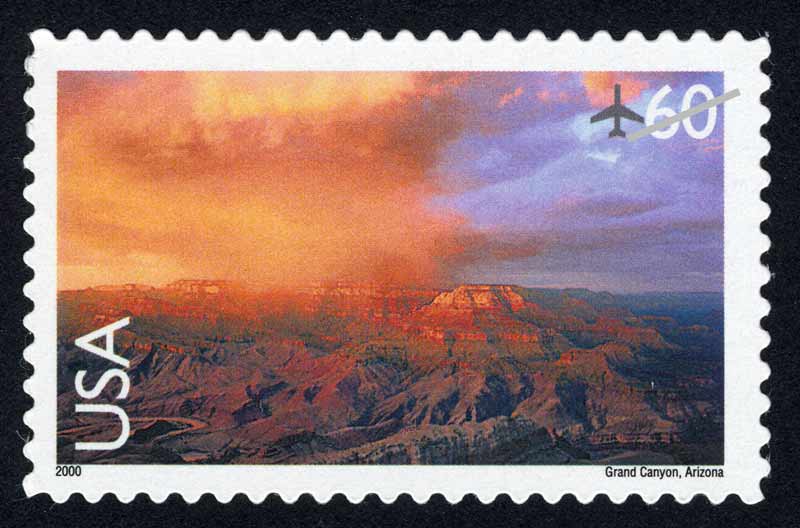
Salem Statesman Journal - May 18, 1999
Posted By: Alex - Wed Jun 17, 2020 -
Comments (2)
Category: 1990s, Postal Services, Stamps, Arizona
Pretzels for God
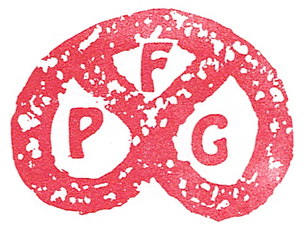
The Pretzels for God movement was founded by Marlene McCauley of Phoenix, Arizona in 1973 after she became inspired to restore the pretzel to what she felt was its rightful place in Christian worship.
Apparently Christians invented pretzels back in the fifth century to eat during Lent since the pretzels contained only water, flour, and salt, but no eggs or milk which were forbidden during the observance. The shape of the pretzel symbolized arms crossed in prayer.
However, in modern times this religious origin has been largely forgotten as pretzels have become a bar and snack food. McCauley was determined to right this wrong. Specifically, she hoped to encourage Christians to eat pretzels during Lent and also to recite before each meal the "pretzel prayer":
More info:
"The Twisting Religious Plot of the Pretzel," Houston Chronicle
"Pretzels for God,"[PDF] text of a speech delivered by McCauley at the National Pretzel Convention in 1974

"Rev. Cornelius O'Mara, S.J. holding Lenten Christian symbol of prayer and penance with students from Central High School"

Kane Republican - Feb 23, 1974
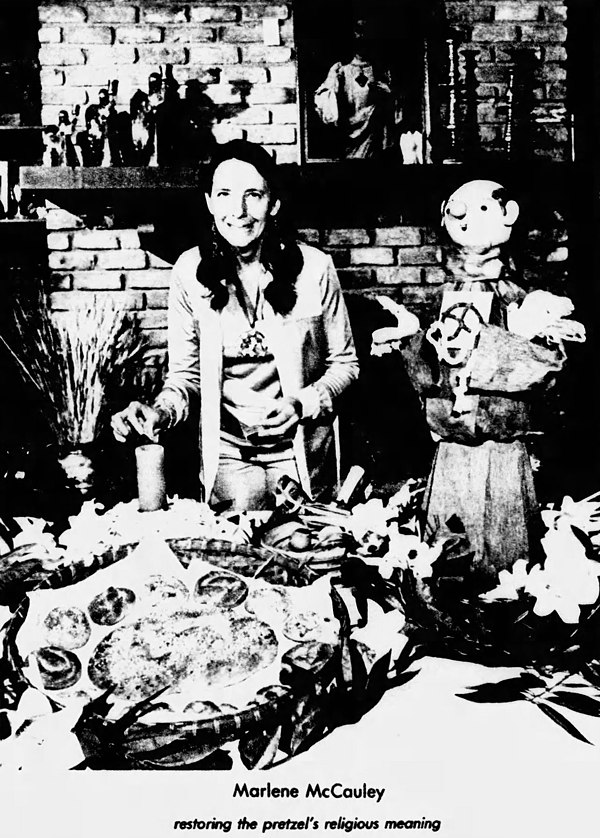
Arizona Republic - Apr 8, 1979
Posted By: Alex - Thu Mar 01, 2018 -
Comments (3)
Category: Food, Junk Food, Religion, 1970s, Arizona
Cursed Rocks
The legend that if you remove a rock from a National Park, you'll bring bad luck upon yourself. Explored in a book.
From the publisher's blurb:
I've never taken anything from a National Park, so my conscience is clean.
The book is available from Amazon. The authors also have a website you can check out.
Posted By: Alex - Sat Dec 23, 2017 -
Comments (1)
Category: Curses, Arizona
Jogging Pigs Experiment
In 1980, an experiment at Arizona State University studied the effects of jogging and high-fat diets on pigs.The pigs ran around a field as a grad student ran behind them, wielding a two-pronged fork for encouragement.
According to a follow-up in the NY Times, the researchers found that diet was more important than exercise for keeping the pigs healthy.


Fort Myers News-Press - Oct 5, 1980
Posted By: Alex - Thu Aug 31, 2017 -
Comments (3)
Category: Arizona
Cactus Bikini
It's become a bit of an iconic image — a young woman wearing a cactus bikini. The photo dates back to 1940 when the Tucson Sunshine Climate Club dressed some University of Arizona coeds up in cactus apparel as a publicity stunt. Of course, it wouldn't have been called a 'bikini' back then, since that term wasn't yet coined. It was called a "cactus sun suit." The suits were made out of Saguaro and prickly pear cacti.The photos then spread far and wide, including into Nazi newspapers, where they were offered as examples of American decadence, "a peak of utter lack of taste."
The model in the top photo is Merri Ciochetti.
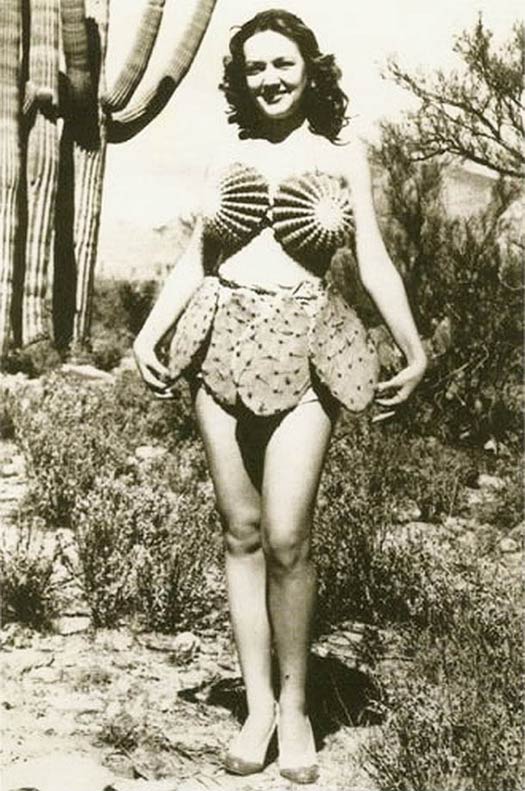

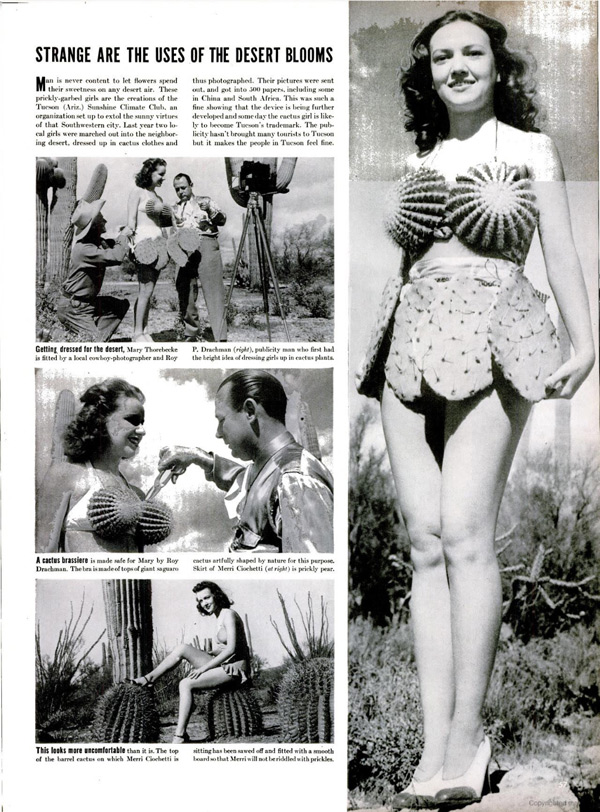

Arizona Daily Star - Feb 27, 1945
Update: One more photo from the photoshoot.

San Bernardino Sun - Mar 27, 1940
Posted By: Alex - Sat Jul 15, 2017 -
Comments (4)
Category: Fashion, 1940s, Arizona
Yuma Swastika Bridge
I spent New Year's Day in Yuma, Arizona, where I had a chance to see a local oddity — the Swastika Bridge, which can be found out in the desert just north of the city.According to local legend, the swastikas were carved into the bridge by German POWs held nearby during WWII. Another story has it that the bridge was designed by the Nazis and shipped to Arizona from Germany.
The reality is that the bridge was built in 1907 by the U.S. Reclamation Service. The engineers decorated it with swastikas after seeing similarly designed and decorated bridges during a trip to India.
The bridge was part of the larger effort to dam the Colorado River and create an agricultural oasis around Yuma.
More info at the Yuma Sun or smoter.com.
And you can find a lot of other examples of the pre-Nazi use of swastikas in American culture at the American Swastika blog.
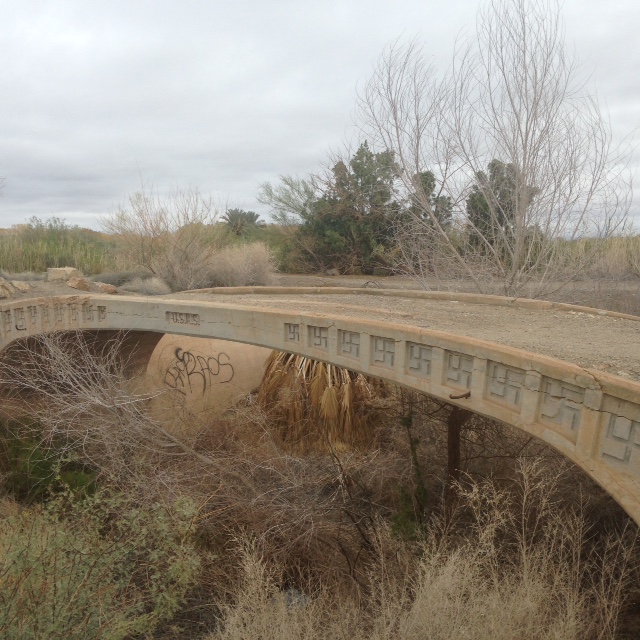

Posted By: Alex - Sat Jan 07, 2017 -
Comments (3)
Category: Buildings and Other Structures, Evil, Signage, Arizona

| Who We Are |
|---|
| Alex Boese Alex is the creator and curator of the Museum of Hoaxes. He's also the author of various weird, non-fiction, science-themed books such as Elephants on Acid and Psychedelic Apes. Paul Di Filippo Paul has been paid to put weird ideas into fictional form for over thirty years, in his career as a noted science fiction writer. He has recently begun blogging on many curious topics with three fellow writers at The Inferior 4+1. Contact Us |




